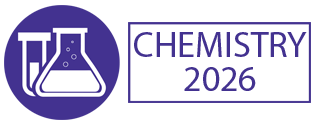Nuclear Magnetic Resonance
Nuclear Magnetic Resonance (NMR) Is A Powerful Physical Phenomenon That Is Used To Determine The Structure Of Molecules, Investigate Chemical Reactions And Analyse Solutions. Its Advantages And Applications Make It A Preferred Tool For Modern Scientific Investigation, From Drug Discovery To Determining The Age Of Fossils. NMR Is Based On The Magnetic Properties Of The Atomic Nucleus In Molecules. When Exposed To A Magnetic Field, Atomic Nuclei Can Absorb And Re-Emit Radio Waves, A Phenomenon Known As Resonance. The Frequency Of The Radio Wave Is Related To The Type Of Nucleus And Its Environment, And Therefore Reflects The Properties Of The Molecule Being Studied. By Analysing The Spectrum Of Frequencies Emitted, Scientists Can Gain Insight Into The Structure And Composition Of A Molecule. For Example, In NMR Spectroscopy, The Frequency Of The Resonance Is Used To Determine The Number And Type Of Atoms. Patterns Of Multiple Peaks On An NMR Spectrum Indicate The Presence Of Different Chemical Groups Within A Molecule. This Type Of Analysis Is Invaluable For Chemical And Pharmaceutical Research, As It Allows Scientists To More Accurately Identify And Synthesise Medicinal Compounds. Additionally, NMR Can Be Used To Study The Dynamics Of Chemical Reactions In Real-Time. By Varying The Conditions Used In A Reaction And Analysing The Resulting Changes In The NMR Spectrum, Scientists Can Determine Which Pathways Are Most Efficient And Whether A Reaction Is Proceeding As Expected. Finally, NMR Is Also Used To Analyse Complex Mixtures And Determine Their Exact Composition. With The Aid Of Specialised NMR Techniques, Such As Two-Dimensional NMR Spectroscopy, Scientists Can Learn More About The Components Of A Mixture And Use This Knowledge To Solve Problems In Environmental And Biomedical Sciences. In Conclusion, Nuclear Magnetic Resonance Is An Essential Tool For Modern Scientific Investigation And Is Invaluable For Its Use In Chemistry, Pharmaceuticals And Medical Sciences. Its Importance And Benefits Are Only Likely To Increase As New Applications Are Developed And The Technology Evolves.

Hossam A Gabbar
Ontario Tech University, Canada
Victor John Law
University College Dublin, Ireland
Alexander Bagaturyants
National Research Nuclear University MEPhI, Russian Federation
Sergey Suchkov
N.D. Zelinskii Institute for Organic Chemistry of the Russian Academy of Sciences, Russian Federation
Shree Niwas Chaturvedi
Centre for Aptitude Analysis and Talent Search, India
Pieter Samyn
SIRRIS, Belgium




Title : Advances in plasma-based radioactive waste treatment
Hossam A Gabbar, Ontario Tech University, Canada
Title : Unraveling the ultrastructure and functions of the neuronal membrane skeleton using super-resolution fluorescence microscopy
Zhou Ruobo, Djillali Liabes University of Sidi Bel Abbes, Algeria
Title : Solar box cooker dehydration, and relative humidity endpoint detection, of lamiaceae culinary leaves on the island of Crete
Victor John Law, University College Dublin, Ireland
Title : Nutrient and heavy metal loads from the Ribeiras to Coastal zones: A land-ocean continuum perspective in Madeira Island
Aracelis Del Carmen Narayan Rajnauth, University of Porto, Portugal
Title : Prospective polyoxometalate-based covalent organic framework heterogeneous catalysts
Arash Ebrahimi, Comenius University Bratislava, Slovenia
Title : Eliminating implant failure in humans with nano chemistry: 30,000 cases and counting
Thomas J Webster, Brown University, United States